Hell..Hasnt he said he was visited here already?..
Mars Mission's Fate Rests on Landing
Collapse
X
-
-
That dollar will end up adding $8 to the US economy if it's spent on space exploration.I guess Im the type person that thinks about things a little closer to home..The economy is still in the shitter so whats happening 35 mil miles away ( closest Mars and Earth have been) doesn't seem all that important..I wouldn't have a problem exploring the " next valley".. Maybe I should donate that dollar to NASA instead of the homeless vet with the sign..he's probably scamming me anyway.
I don't understand why people always complain about the relatively small amounts spent on NASA but don't seem to mind the ludicrous crazy money spent on 'defence'.
You've just spent $89 billion on 187 new F-22 fighters which aren't even that great.
If you had bought 182 instead then that's the 2 year Mars mission paid for.Comment
-
Another one of those classic genius posts, sure to generate responses. You log on the next day to see what your witty gem has produced to find no one gets it and 2 knotheads want to stick their dicks in it... Well played, sir!!Comment
-
The amount spent is peanuts in the overall scheme. Just for example - if we ended church tax exemptions alone, we could send a rover a month to Mars...FOREVER. And they're trying to see if it habitable to see if Terraforming is possible, if we can introduce more water and O2 and make the place begin to resemble earth. After all, given current popluation growth estimates, there's not going to be enough room on earth for everyone several generations from now...I guess Im the type person that thinks about things a little closer to home..The economy is still in the shitter so whats happening 35 mil miles away ( closest Mars and Earth have been) doesn't seem all that important..I wouldn't have a problem exploring the " next valley".. Maybe I should donate that dollar to NASA instead of the homeless vet with the sign..he's probably scamming me anyway.Originally posted by conmee
If anyone even thinks about deleting the Muff Thread they are banned.... no questions asked.
That is all.
Icon.Originally posted by GO-SPURS-GO
I've seen prominent hypocrite liberal on this site Jhale667
Originally posted by Isaac R.
Then it's really true??:eek:
The Muff Thread is really just GONE ???
OMFG...who in their right mind...???
Originally posted by eddie78
I was wrong about you, brother. You're good.Comment
-
Man- my thoughts exactly. I guess if we don't actually set foot on Mars, it ain't trumping Snookie's baby.My karma just ran over your dogma.Comment
-
-
interesting view this morning
A contrail from a missile launched from New Mexico early this morning could be seen from most of the Phoenix area.
The 40-foot tall missile was launched from Fort Wingate, near Gallup, and directed toward the White Sands Missile Range. A Patriot Advanced Capability 3 Missile was launched to intercept it.
There are reports of the contrail being seen from Tucson to Las Vegas.
Read more: http://www.azcentral.com/news/articl...#ixzz26MaXkqWQAnother one of those classic genius posts, sure to generate responses. You log on the next day to see what your witty gem has produced to find no one gets it and 2 knotheads want to stick their dicks in it... Well played, sir!!Comment
-
Of course. We spend most our tax money on the military. Eisenhower's warning about people building arms and starting wars just to make money was true. This has been going on since the 1950's. We built a huge military machine to win World War II and after the war it morphed into a big profit industry. Once the Soviet Union was gone there was no justification for it so let's stir some shit in the middle east. The middle east is the only place on the planet you can have a major war anymore. Nobody else wants to fight.
I mean they just spent a fortune on a new fighter the US Air Force even says we don't need. There is no use for it because there is nobody to fight that has a real air force. We are fighting people with Kalashnikov rifles and RPG's.Last edited by Nitro Express; 09-13-2012, 11:31 AM.No! You can't have the keys to the wine cellar!Comment
-
Snow on Mars...
Snow on Mars: NASA Spacecraft Spots 'Dry Ice' Snowflakes
By SPACE.com Staff | SPACE.com – 4 hrs ago.
A spacecraft orbiting Mars has detected carbon dioxide snow falling on the Red Planet, making Mars the only body in the solar system known to host this weird weather phenomenon.
The snow on Mars fell from clouds around the planet's south pole during the Martian winter spanning 2006 and 2007, with scientists discovering it only after sifting through observations by NASA's Mars Reconnaissance Orbiter (MRO). The Martian south pole hosts a frozen carbon dioxide — or "dry ice" — cap year-round, and the new discovery may help explain how it formed and persists, researchers said.
"These are the first definitive detections of carbon-dioxide snow clouds," lead author Paul Hayne, of NASA's Jet Propulsion Laboratory (JPL) in Pasadena, Calif., said in a statement. "We firmly establish the clouds are composed of carbon dioxide — flakes of Martian air — and they are thick enough to result in snowfall accumulation at the surface."
The find means Mars hosts two different kinds of snowfall. In 2008, NASA's Phoenix lander observed water-ice snow — the stuff we're familiar with here on Earth — falling near the Red Planet's north pole,. [7 Biggest Mysteries of Mars]
Hayne and his team studied data gathered by MRO's Mars Climate Sounder instrument during the Red Planet's southern winter in 2006-2007. This instrument measures brightness in nine different wavelengths of visible and infrared light, allowing scientists to learn key characteristics of the particles and gases in the Martian atmosphere, such as their sizes and concentrations.
The research team examined measurements the Mars Climate Sounder made while looking at clouds — including one behemoth 300 miles (500 kilometers) wide — from directly overhead, and from off to the side. These combined observations clearly revealed dry-ice snow falling through the Red Planet's skies, researchers said.
"One line of evidence for snow is that the carbon-dioxide ice particles in the clouds are large enough to fall to the ground during the lifespan of the clouds," said co-author David Kass, also of JPL. "Another comes from observations when the instrument is pointed toward the horizon, instead of down at the surface."
"The infrared spectra signature of the clouds viewed from this angle is clearly carbon-dioxide ice particles, and they extend to the surface," Kass added. "By observing this way, the Mars Climate Sounder is able to distinguish the particles in the atmosphere from the dry ice on the surface."
Astronomers still aren't entirely sure how the dry ice sustaining Mars' south polar cap — the only place where frozen carbon dioxide exists year-round on the planet's surface — is deposited. It could come from snowfall, or the stuff may freeze out of the air at ground level, researchers said.
"The finding of snowfall could mean that the type of deposition — snow or frost — is somehow linked to the year-to-year preservation of the residual cap," Hayne said.
Dry ice requires temperatures of about minus 193 degrees Fahrenheit (minus 125 Celsius) to fall, reinforcing just how cold the Martian surface is.
The study will be published in an upcoming issue of the Journal of Geophysical Research. Hayne performed the research while a postdoc at Caltech in Pasadena.Comment
-
-
NASA's Mars rover finds rock with Earth-like chemistry
By Irene Klotz | Reuters – 10 hrs ago
Reuters/Reuters - This NASA image from Mars Curiosity's Mast Camera taken on September 22, 2012 and released October 11, 2012 shows where NASA's Mars Curiosity rover aimed two different instruments to study
CAPE CANAVERAL, Florida (Reuters) - When scientists selected a rock to test the Mars rover Curiosity's laser, they expected it to contain the same minerals as rocks found elsewhere on the Red Planet, but learned instead it was more similar to a rock found on Earth.
The rock was chemically more akin to an unusual type of rock found on oceanic islands like Hawaii and St. Helena, as well as in continental rift zones like the Rio Grande, which extends from Colorado to Chihuahua, Mexico.
"It was a bit of a surprise, what we found with this rock," Curiosity scientist Ralf Gellert of the University of Guelph in Ontario, Canada, told reporters on a conference call Thursday.
"It's igneous," Gellert said, referring to rock formed from molten material. "But it seems to be a new kind of rock type that we encountered on Mars."
Curiosity arrived on Mars two months ago to learn if the most Earth-like planet in the solar system was suitable for microbial life.
Last month, Curiosity's laser was used to zap the football-sized rock and the rover analyzed the pulverized material, as well as tiny pits left behind, to determine its chemical composition.
Scientists found the rock lacks magnesium and iron - elements found in igneous rock examined by previous Mars rovers Spirit and Opportunity.
The rock, named after a Jet Propulsion Laboratory rover engineer, Jake Matijevic, who died shortly after Curiosity's landing, was also rich in feldspar-like minerals, which provided clues about the rock's history.
"The way in which this type of rock forms ... is like how applejack liquor was made," geologist Edward Stolper, with the California Institute of Technology in Pasadena, told reporters.
In colonial times, hard apple cider was put into big barrels and in the winter the liquid would partly freeze. "You'd crystallize out ice and you'd make more and more and more concentrated apple-flavored liquor," Stolper said.
Magma inside a planet can undergo a similar process.
"You melt the interior and it comes to the surface and, just like the applejack, when you cool it, it crystallizes," Stolper said, adding that it takes very particular conditions on Earth to produce this type of magma.
The rover meanwhile has moved on to testing and cleaning of its soil scoop. Eventually, scientists want to funnel soil samples to Curiosity's onboard laboratory for more extensive chemical analysis.
The rover is part way to its first science target, an area known as Glenelg, which has three different types of rock intersecting.
The car-sized Curiosity rover landed inside a giant impact basin called Gale Crater, located near the Martian equator, for a two-year, $2.5 billion astrobiology mission, NASA's first since the 1970s-era Viking probes.
(Editing by Cynthia Johnston and Jim Loney)
Yahoo Photo GalleryComment
-
Mars Mystery: Has Curiosity Rover Made Big Discovery?
By Mike Wall | SPACE.com – Tue, Nov 20, 2012
NASA's Mars rover Curiosity used its Mars Hand Lens Imager (MAHLI) to snap a set of 55 high-resolution images on Oct. 31, 2012. Researchers stitched the pictures together to create this full-color self-portrait.
NASA's Mars rover Curiosity has apparently made a discovery "for the history books," but we'll have to wait a few weeks to learn what the new Red Planet find may be, media reports suggest.
The discovery was made by Curiosity's Sample Analysis at Mars instrument, NPR reported today (Nov. 20). SAM is the rover's onboard chemistry lab, and it's capable of identifying organic compounds — the carbon-containing building blocks of life as we know it.
SAM apparently spotted something interesting in a soil sample Curiosity's huge robotic arm delivered to the instrument recently.
"This data is gonna be one for the history books," Curiosity chief scientist John Grotzinger, of Caltech in Pasadena, told NPR. "It's looking really good."
The rover team won't be ready to announce just what SAM found for several weeks, NPR reported, as scientists want to check and double-check the results. Indeed, Grotzinger confirmed to SPACE.com that the news will come out at the fall meeting of the American Geophysical Union, which takes place Dec. 3-7 in San Francisco.
The $2.5 billion Curiosity rover landed inside Mars' huge Gale Crater on Aug. 5, kicking off a two-year mission to determine if Mars has ever been capable of supporting microbial life.
The car-size robot carries 10 different instruments to aid in its quest, but SAM is the rover's heart, taking up more than half of its science payload by weight.
In addition to analyzing soil samples, SAM also takes the measure of Red Planet air. Many scientists are keen to see if Curiosity detects any methane, which is produced by many lifeforms here on Earth. A SAM analysis of Curiosity's first few sniffs found no definitive trace of the gas in the Martian atmosphere, but the rover will keep looking.
Curiosity began driving again Friday (Nov. 16) after spending six weeks testing its soil-scooping gear at a site called "Rocknest." The rover will soon try out its rock-boring drill for the first time on the Red Planet, scientists have said.
YahooComment





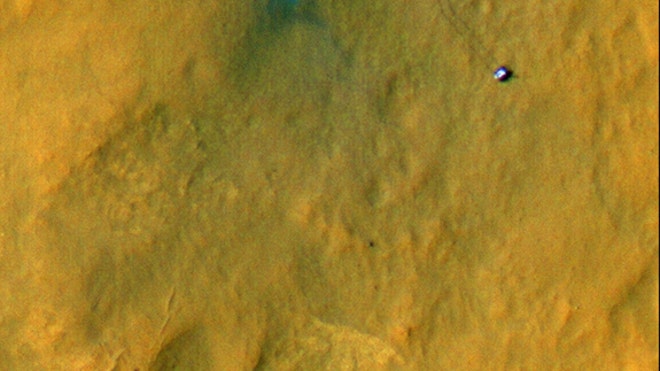


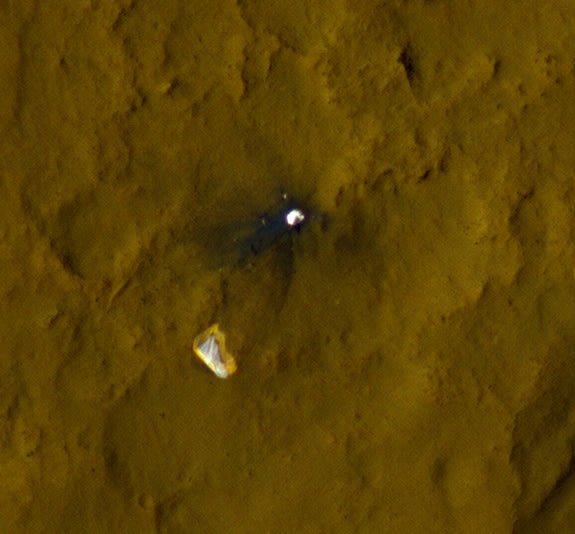

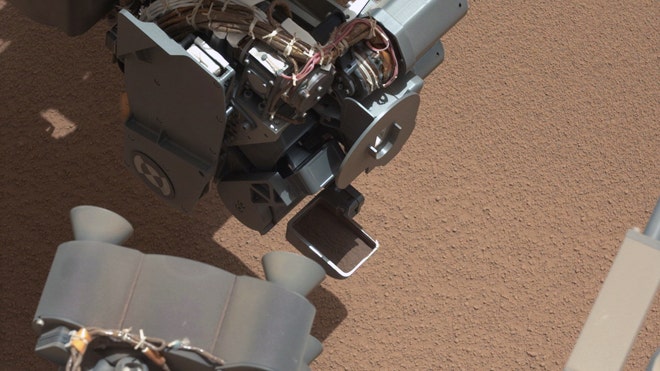
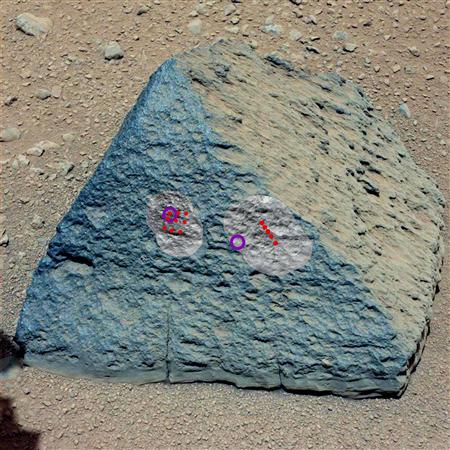
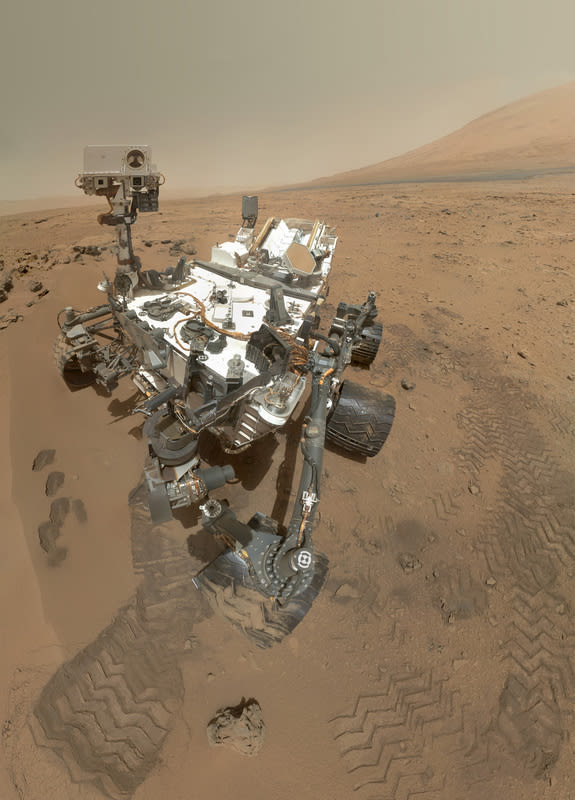
Comment